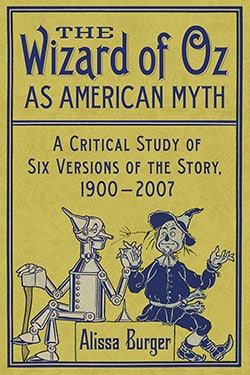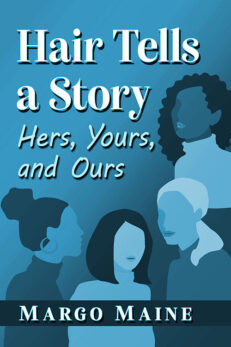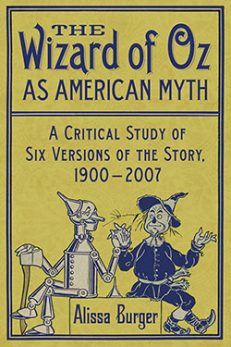The Wizard of Oz as American Myth
A Critical Study of Six Versions of the Story, 1900–2007
$29.95
In stock
About the Book
Since the publication of L. Frank Baum’s The Wonderful Wizard of Oz in 1900, authors, filmmakers, and theatrical producers have been retelling and reinventing this uniquely American fairy tale. This volume examines six especially significant incarnations of the story: Baum’s original novel, the MGM classic The Wizard of Oz (1939), Sidney Lumet’s African American film musical The Wiz (1978), Gregory Maguire’s novel Wicked: The Life and Times of the Wicked Witch of the West (1995), Stephen Schwartz and Winnie Holzman’s Broadway hit Wicked: A New Musical (2003), and the SyFy Channel miniseries Tin Man (2007). A close consideration of these works demonstrates how versions of Baum’s tale are influenced by and help shape notions of American myth, including issues of gender, race, home, and magic, and makes clear that the Wizard of Oz narrative remains compelling and relevant today.
About the Author(s)
Bibliographic Details
Alissa Burger
Format: softcover (6 x 9)
Pages: 240
Bibliographic Info: 8 photos, notes, bibliography, index
Copyright Date: 2012
pISBN: 978-0-7864-6643-6
eISBN: 978-0-7864-8959-6
Imprint: McFarland
Table of Contents
Acknowledgments ix
Introduction: Down the Yellow Brick Road 1
1. Reinventing American Myth 5
2. Between Text and Performance 30
3. Wicked and Wonderful Women 55
4. Race, History, and Representation 92
5. Home Sweet Home 126
6. Magic and Witchcraft 160
Conclusion: The Never-Ending Yellow Brick Road 193
Chapter Notes 197
Bibliography 217
Index 227
Book Reviews & Awards
- “an engaging and intelligent analysis of specific iterations of the story”—Mythlore
- “Burger’s study succeeds on many levels. Let us hope more scholars as talented as Alissa Burger will choose to follow new yellow brick roads”—Journal of the Fantastic in the Arts
- “Burger does this popular myth great scholarly service by providing insightful analysis into how the evolving story and interpretations reflect their particular eras”—Reference & Research Book News





